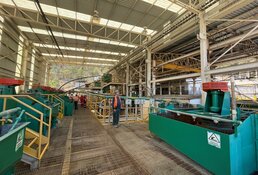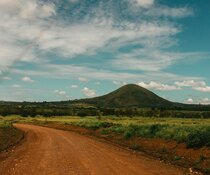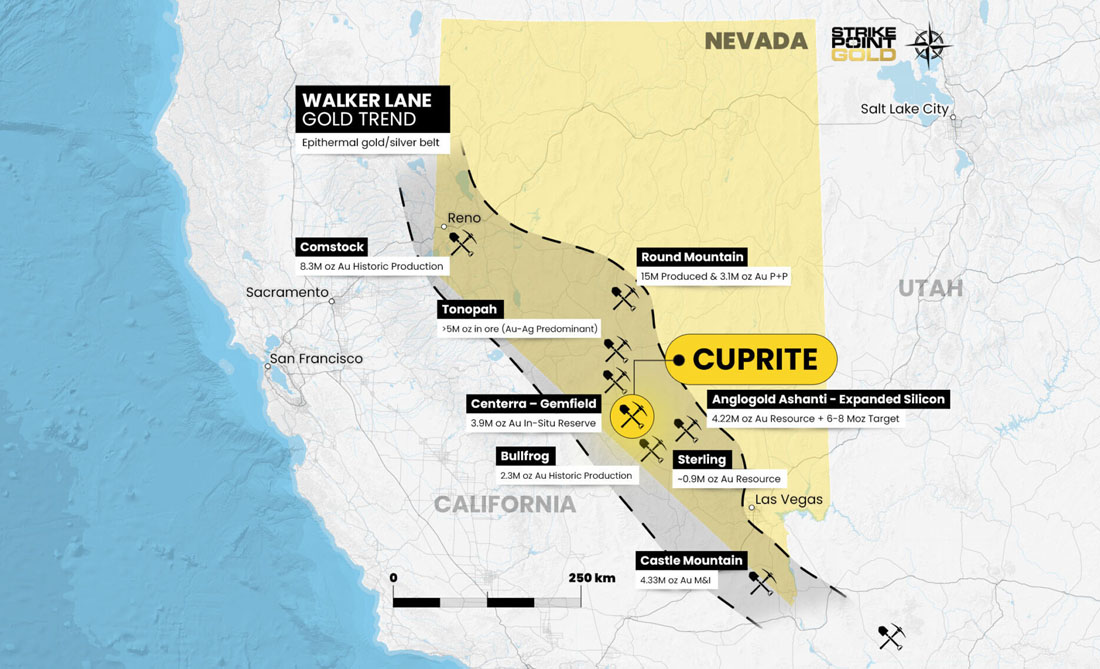Dakota Gold Corp. (DC:NYSE American) reported assay results from its Maitland Gold Project in the historic Homestake District of South Dakota that show continuity of the gold mineralization along the project's Unionville Zone.
Infill drilling in four holes verified that the mineralization is continuous along a significant north-south structure.
Two of the holes also identified new zones of Homestake Mine-style mineralization at the western margins of the zone's structural corridor.
"We are pleased that the Unionville Zone Tertiary epithermal gold mineralization appears to connect between our wider spaced first pass drilling," Vice President Exploration James Berry said. "The presence of Homestake Mine-style mineralization in MA23C-012 and MA23C-013 (provides) continued evidence that the Homestake Mine-style Precambrian orogenic gold system is present at Maitland."
Robert Quartermain and Jonathan Awde head Dakota, which is exploring 46,000 acres it has acquired and consolidated over the past decade surrounding the Homestake Mine. Industry giant Barrick Gold Corp. (ABX:TSX; GOLD:NYSE) also backs Dakota Gold.
Much of the land owned by Dakota Gold has not been explored in nearly 30 years, leading some to hope for a large discovery there.
"Dakota Gold is now seeking to revitalize this legendary district," Canaccord Genuity analyst Michael Fairbairn has written.
Once called the "Richest 100 Square Miles" on Earth, the Homestake Mine was discovered in 1876 and consolidated by George Hearst. Over 126 years, miners extracted 41 million ounces gold (Moz Au) and 9 Moz silver (Ag).
The Catalyst: Building Substantial Value in Dakota Gold
Dakota said the Maitland drilling program is now transitioning to tightly spaced holes on the JB and Unionville zone discoveries. It plans to move one of two drills from another of its projects, Richmond Hill, to Maitland in advance of developing a maiden resource.
"The early success of our programs is allowing us to plan and implement aggressive follow-up programs that we believe will build substantial value in Dakota Gold in the near term," Chief Operating Officer Jerry Aberle said.
The results released Wednesday included Hole MA23C-011, which intersected 2.13 grams/tonne (g/t) Au over 9.6 meters of Tertiary epithermal gold mineralization, the company said.
MA23C-012, drilled from the same pad, intersected 1.17 g/t Au over 11 meters and 1.99 g/t Au over 16.6 meters.
"Dakota Gold is now seeking to revitalize this legendary district," Canaccord Genuity analyst Michael Fairbairn has written.
The company said MA23C-012 intersected 2.5 g/t Au over 22.6 meters of Homestake Mine-style orogenic gold mineralization associated with quartz-ankerite veins containing arsenopyrite and pyrite. This intercept included a higher-grade zone of 3.67 g/t Au over 13.3 meters.
MA23C-013 was drilled 140.2 meters northwest of MA23C-011. It intersected 2.06 g/t Au over 44.1 meters of Tertiary epithermal gold mineralization and 3.77 g/t Au over 1.7 meters of Homestake Mine-style orogenic gold mineralization.
MA23C-014 was drilled 154.5 meters north of MA23C-011 and intersected 0.93 g/t Au over 22.9 meters and 1.51 g/t Au over 13.1 meters of Tertiary epithermal gold mineralization.
What do those grades mean? According to Stockhead, 1 g/t Au can make an open-cut project viable, while anything over 5 g/t Au is considered high-grade.
"A tip for investors, therefore, is to consider a company's average grades and look for drill cores that 'start and end in mineralization' rather than buying shares on just one excellent drill core result, as well as the scale of the deposit," the website noted.
Co.'s Most Significant Discovery to Date?
Last month, the company announced that partial assay results had extended its JB Gold Zone discovery at Maitland by 171 meters.
Drill hole MA23C-022 confirmed that Homestake-style gold mineralization is present 5 kilometers northwest of the old mine, Dakota said.
The lower portion of the drill hole intersected 19.55 g/t Au over 5 meters in a step-out from drill hole from MA23C-017, which intersected 12.51 g/t Au over 4.7 meters.
The JB Gold Zone could be the company's "most significant discovery to date," Canaccord Genuity analyst Peter Bell noted in an August research note.
The JB Gold Zone could be the company's "most significant discovery to date," Canaccord Genuity analyst Peter Bell noted in an August research note.
"The two holes suggest a thickened zone of mineralized iron formation, similar to the 'ledges' mined in the old Homestake Mine," Bell wrote. "Although much is still to be proven at the drill bit if additional drilling demonstrates JB is a new ledge, we believe Dakota could quickly advance it from initial discovery to a substantial, high-grade deposit."
Berry called the grades "analogous with the mineralization encountered at the Homestake Mine."
"With every new intercept, we have increased confidence that we have identified another Homestake Ledge system at Maitland," he said.
Ownership and Share Structure
According to the company, approximately 30% of its shares are with management and insiders.
Out of management, Co-Chairman Robert Quartermain holds the most shares at 9.32% or 7.34 million shares, Reuters said. President and CEO Jonathan Awde is next at 7.85%, with 6.18 million, while COO Jerry Aberle holds 5.33%, with 4.2 million. The remainder of the 30% is held by other members of management and the board of directors.
About 26.6% of the shares are with institutional investors. According to Reuters, those include Van Eck Associates with 3.74%, The Vanguard Group Inc. with 3.33%, Blackrock Institutional Trust Co. with 3.73%, and Sprott Asset Management LLP with 0.71%.
About 27.4% is with strategic investors, including Barrick Gold Corp., which owns 3%. The rest is retail.
Dakota Gold has a market cap of US$207.92 million, with 78.76 million shares outstanding and about 59.49 million free-floating. It trades in a 52-week range of US$4.03 and US$2.4601.
Sign up for our FREE newsletter
Important Disclosures:
- Dakota Gold Corp. is a billboard sponsor of Streetwise Reports and pays SWR a monthly sponsorship fee between US$4,000 and US$5,000.
- As of the date of this article, officers and/or employees of Streetwise Reports LLC (including members of their household) own securities of Dakota Gold Corp. and Barrick Gold Corp.
- Steve Sobek wrote this article for Streetwise Reports LLC and provides services to Streetwise Reports as an employee.
- The article does not constitute investment advice. Each reader is encouraged to consult with his or her individual financial professional. By opening this page, each reader accepts and agrees to Streetwise Reports' terms of use and full legal disclaimer. This article is not a solicitation for investment. Streetwise Reports does not render general or specific investment advice and the information on Streetwise Reports should not be considered a recommendation to buy or sell any security. Streetwise Reports does not endorse or recommend the business, products, services or securities of any company mentioned on Streetwise Reports.
For additional disclosures, please click here.






































